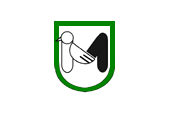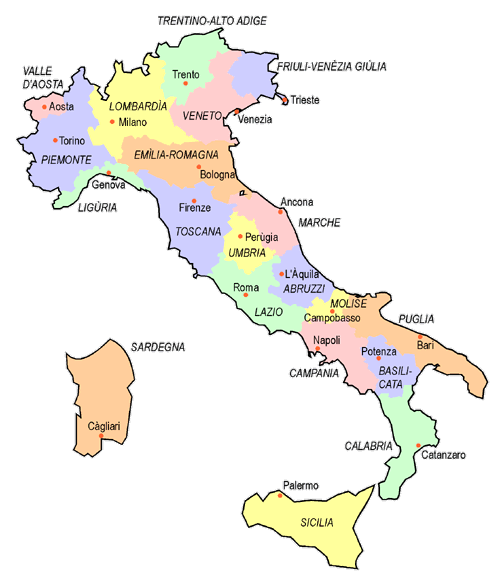mobile View, to the German Version tap the flag


- Marche
- Region of Italy
- own name: Marche
• Flag
• Meaning/Origin of the Flag
• Map of the regions of Italy
• Numbers and Facts
• History
• Origin of the Country's Name

Flag of Marche,
ratio = 2:3,
Source, by: Wikipedia (D)






The flag of Marches is single-coloured white and shows in the middle a kind of coat of arms of the region, but it is more a logo. It shows a green bordered, silvery shield with a letter "M" in the middle. The left half of the "M" is drawed as a woodpecker. There are also versions of the flag, which additionally show the inscription "REGIONE MARCHE" in green.
Source: Wikipedia (D)

all names in Italian

Source: Volker Preuß

Area: 3.743 square miles
Inhabitants: 1.518.400 (2019)
Density of Population: 406 inh./sq.mi.
Capital: Ancona, 100.280 inh. (2019)
official Language: Italian
Time Zone: GMT +1h
Source: Wikipedia (D)

6th cent. B.C. · in the today's Marches settle the Pikentians and Umbrians, whose territories get annexed by Rome ca. between 290 B.C. and 260 B.C.
410 A.D. · invasion of the Western Goth
476 · dismissal of the last Roman emperor Romulus Augustulus, end of the (West)Roman Empire, the area of the Marches belongs until 493 to the Empire of the Odoaker
544 · conquest by Byzantium (East Rome)
568/569 · conquest of the today's Marches by the Langobardes and incorporation into their empire as Duchy of Ancona
756 · the north of the today's Marches goes as "Donation of Pippin" from the king of the Franks to the pope, incorporation into the Papal States (Patrimonium Petri)
774 · conquest of Italy by the Franks, the Papal States persist
820 · the area of Ancona Town (middle of the today's Marches) comes to the Papal States
843 · at the division of the Frankish Empire the Papal States come to the Kingdom of Italy
899–950 · Hungarians invasions
961 · Otto I. brings the Papal States to the German Kingdom
1130 · Lower Italy with the Langobardian principalities, Naples Town, the Duchy of Spoleto and the from the Byzantians left Norman territorities get united with the Norman Kingdom of Sicily, the south of today's Marches is a part of it and remains connected with the Kingdom of Sicily, the middle and the north of today's Marches remain in the frontier of the Roman-German Kingdom
1209 · a large part of the Duchy of Spoleto (south of Marches) gets purchased from the Papal States (Patrimonium Petri)
1796 · Italy Campaign of Napoléon
1798 · French troops of Napoléon march into Rome, the Pope goes to Valence in France, the Papal States (Patrimonium Petri) become the "Roman Republic", in 1799 Papal States again, but is in 1809 annexed by France
1799 · withdrawal of the French troops, invasion of troops from the Kingdom of Naples, the "Roman Republic" ends
1801 · concordat with France, restore of the Papal States
1808 · Marches and the Romagna become separated by Napoléon from the Papal States and annexed to the Kingdom of Italy under King Napoléon I.
1815 · Congress of Vienna, restore of the Papal States
1860 · Umbria, Marches and the Romagna become annexed by Sardinia-Piedmont
17th of March 1861 · coronation of Victor Emmanuel II. of Sardinia-Piedmont to the King of the Kingdom of Italy
1947 · establishment of the Marches region as administrative unit
Source: Meyers Konversationslexikon,
Atlas zur Geschichte,
Wikipedia (D)

The word "mark" comes from the Latin word "marca", which means "border". So is clarified the position of a mark on the border of a special area. The marks (Marche, Marches) of the German Empire were placed outside the actual territory of the empire, on conquered or otherwise owned land. Their tasks were to secure the empire by castles and garrisons, christianization, settlement of fortified farmers. The managing of a mark was assigned to a Margrave. There were several marks, at very different times. In the Marche region are first mentioned in the 9th Century three Frankish marches, even yet in the 12th Century – the Frankish Empire dissapeared a long time ago – as one single march, the March of Ancona. This has been transferred to the name of the whole landscape and preserved until today.
Source: Wikipedia (D)


Kindly supported by:

![]()






